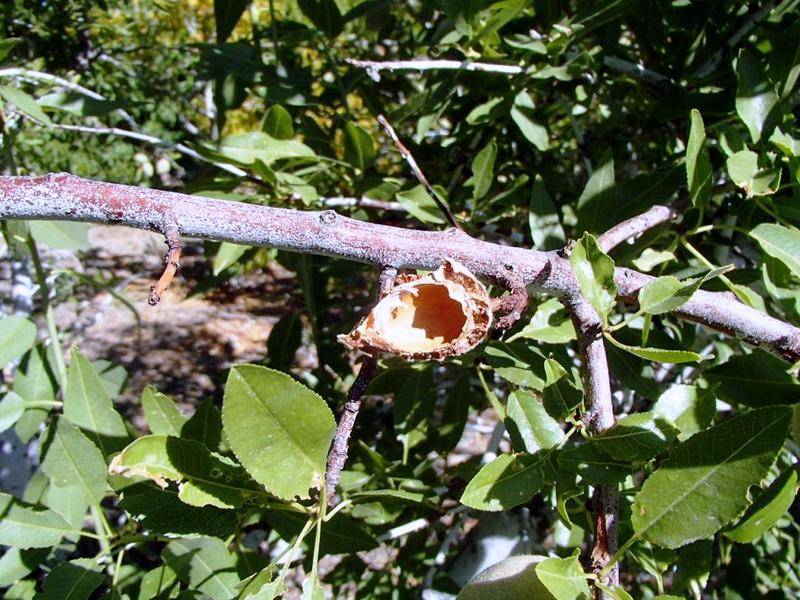Q: I am a wildlife biologist and gardener. You should withdraw your testimony about ground squirrel poisoning as the poisoned bodies appear in the food chain of hawks, owls, coyotes, foxes, and snakes.
ON: You’re right. Poisoned animal carcasses can end up in the food chain of other animals. It is important to ensure that individuals follow any federal, state, or local law or regulation relating to the use of a pesticide – whether it be to kill weeds, insects, protect plants from disease, or end the life of a living being – and that every pesticide is used as a last resort. Be sure to read the pesticide label and follow the directions.
Ground squirrels can steal almonds from a tree overnight. One way to avoid this is to harvest the nuts earlier in the calendar year and dry them in a sheltered location.
There are several ways to eliminate gophers. There are pest control companies that focus on humane methods and market these options to affected gardeners. I would recommend anyone interested to follow the University of California’s advice on how to control ground squirrels: bit.ly/2UY0Q6Y.
Please remember that capturing and releasing an animal in another area is illegal and potentially cruel in most states.
Q: Why do the leaves of my fruit trees cup?
ON: Fruit tree leaves from apples, pears, pistachios, tomatoes, and other plants that are in full sun all day will sometimes drip or roll. Excessive irrigation and fertilization, high temperatures, the diversity of the tree or plant, excessively dry soil, root damage and plant shock are some of the environmental factors that can lead to physiological leaf rolling in fruit trees. Over time, all of the plant’s leaves can be affected.
If your plant is showing a lot of leaf curl, blame it for the high temperatures of summer first. Rolling leaves will not harm the leaves as long as they remain soft and pliable.
Next, pay attention to watering. For most garden plants, watering should keep the soil consistently moist and not allow the soil to dry out quickly.
Apply a surface mulch to slow water loss from the soil and reduce plant stress. Wood shavings, straw, and scraps of newspaper that are applied a few centimeters deep slow down the loss of water from the soil, reduce fruit cracks through irrigation and retain moisture.
Q: What causes cantaloupe to split before sliding on the vine?
ON: As the melon nears ripeness and the outer peel hardens and irrigation water is pumped into the fruit, they split like any fruit. This can happen with melons, cherries, peaches, tomatoes, cucumbers and other botanical fruits. Thin-skinned fruits such as cherries are more prone to popping open after a rain than thick-skinned melons. Fruits splitting can happen shortly after watering, when temperatures are causing a lot of stress, or right after rain.
Rainwater penetrates the fruit through the skin or rind, causing it to swell and burst. This is due to an osmotic effect, and susceptible fruits will split when they are almost ripe and when their sugar content peaks.
The near ripening time is the time when these fruits are full of sugar and ready for rain and osmotic effects. Almost ripe is a dangerous time for a combination of fruit and rain.
What to do? First, notice the variety. Some varieties are more prone to splitting, and some are not.
Second: Menopausal fruits (the fruits that continue to ripen after harvest) are harvested early before rain and allowed to ripen in a protected manner after the harvest. Unfortunately, melons are not climacteric and do not continue to ripen after harvest. Protect the fruit from rainwater and apply surface mulch in hot weather.
Q: Why are there large branches on the ground near my pomegranate trees?
ON: This can happen with pomegranates if they have briefly been in the ground and are not cut regularly. Pomegranates should remove any leaking suction cups so that only five or six of the larger stems are left. Then the side growth from these main trunks is pruned to about knee height. As a result, larger fruits are produced on the remaining stems and the fruits produced on the lower branches do not lie on the ground.
The remaining stems begin to bloom and bow to the ground when the heavy fruits bend them over. As these stems get older, they get stronger. New growth comes from the remaining curved stems, rather than as suction cups from the base.
Removing the suction cup growth from below promotes strong and upright growth of the remaining stems without overfilling them. Removal of suction cups must be done frequently at a young age until the new growth emerges from the larger stems rather than the suction cups at the base.
Q: What is the NPK in cow dung that some landscapers use on grass?
ON: The fertilizer content (NPK value) of ox or cow dung varies depending on the food intake and the collection and processing method. It is considered to be low in fertilizer when it comes to fertilizers.
It would take a very small amount of bagged manure to make up the manure content of a ton of manure. Both fertilizers contain around 4 percent nitrogen and smaller amounts of phosphorus (P value) and potassium (K value). They can be rich in salts as well as rich in good and bad microorganisms.
There is a difference between beef and cattle manure. Cow dung is typically obtained from cows used in the dairy industry. Ox manure is obtained from cows that are fed to produce meat. Cattle manure usually contains more salt than cow manure and is considered hotter when applied to plants.
The value of manure is due to its soil enrichment potential rather than its NPK content. Because of this, it can be mixed in a hot compost heap. The heat from the compost heaps helps to change the levels of microorganisms and to reduce or possibly eliminate the microorganisms that are a potential health problem for humans.
Research has shown that the use of composted manure can reduce lawn diseases due to its high number of microorganisms. Dry manure is best spread with a barrel compost spreader.
Bob Morris is a horticultural expert and Professor Emeritus from the University of Nevada, Las Vegas. Visit his blog at xtremehorticulture.blogspot.com. Send questions to Extremehort@aol.com.












